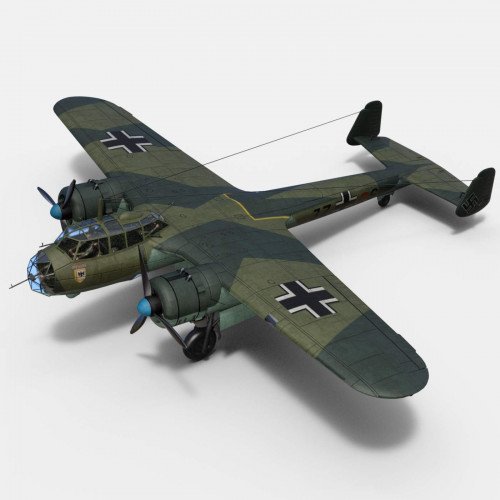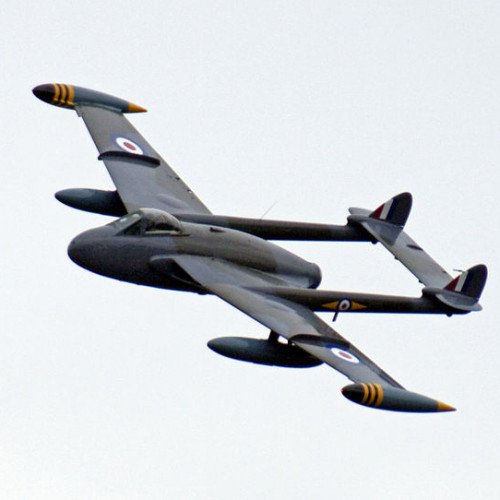Dornier Do 17 VS de Havilland Venom

Dornier Do 17
The Dornier Do 17, sometimes referred to as the Fliegender Bleistift ("flying pencil"), is a light bomber of Nazi Germany during World War II. It was produced by Claudius Dornier's company, Dornier Flugzeugwerke. The aircraft was designed as a Schnellbomber ("fast bomber"), a light bomber which, in theory, would be so fast that it could outrun defending fighter aircraft. The Dornier was designed with two engines mounted on a "shoulder wing" structure and possessed a twin tail fin configuration. The type was popular among its crews due to its handling, especially at low altitude, which made the Do 17 harder to hit than other German bombers. Designed in the early 1930s, it was one of the three main Luftwaffe bomber types used in the first three years of the war. The Do 17 made its combat debut in 1937 during the Spanish Civil War, operating in the Condor Legion in various roles. Along with the Heinkel He 111 it was the main bomber type of the German air arm in 1939–1940. The Dornier was used throughout the early war, and saw action in significant numbers in every major campaign theatre as a front line aircraft until the end of 1941, when its effectiveness and usage was curtailed as its bomb load and range were limited. Production of the Dornier ended in mid-1940, in favour of the newer and more powerful Junkers Ju 88. The successor of the Do 17 was the much more powerful Dornier Do 217, which started to appear in strength in 1942. Even so, the Do 17 continued service in the Luftwaffe in various roles until the end of the war, as a glider tug, research and trainer aircraft. A considerable number of surviving examples were sent to other Axis nations as well as countries like Finland. Few Dornier Do 17s survived the war and the last was scrapped in Finland in 1952. On 3 September 2010, the Royal Air Force Museum London announced the discovery of a Henschel-built Dornier Do 17Z buried in the Goodwin Sands off the coast of Kent, England. On 10 June 2013, the salvage team raised the airframe from the seabed.
Statistics for this Xoptio

de Havilland Venom
The de Havilland DH 112 Venom is a British post-war single-engined jet aircraft developed and manufactured by the de Havilland Aircraft Company. Much of its design was derived from the de Havilland Vampire, the firm's first jet-powered combat aircraft.The Venom entered service with the Royal Air Force (RAF), where it was used as a single-seat fighter-bomber and two-seat night fighter. A dedicated model for aerial reconnaissance was also operated by the Swiss Air Force. The Venom functioned as an interim stage between the first generation of British jet fighters – straight-wing aircraft powered by centrifugal flow engines such as the Gloster Meteor and the Vampire – and later swept wing, axial flow-engined combat aircraft, such as the Hawker Hunter and de Havilland Sea Vixen. Accordingly, the type had a relatively short service life in the RAF, being withdrawn from frontline operations by the service in 1962 as a result of the introduction of more capable designs. However, it was used in combat during the Suez Crisis, the Malayan Emergency, and the Aden Emergency. The Venom proved to be popular on the export market, being sold in substantial numbers to Iraq, New Zealand, Sweden, Switzerland and Venezuela. The Swiss Air Force was the last active military operator of the Venom, retiring their last examples during 1983. Large numbers of ex-military Venoms have since been acquired by private entities and several have continued to fly, performing aerial displays at various air shows, while many examples have been preserved in static display conditions in museums and as gate guardians. A specialised derivative, the Sea Venom, was produced as a navalised version of the aircraft suitable for carrier operations.